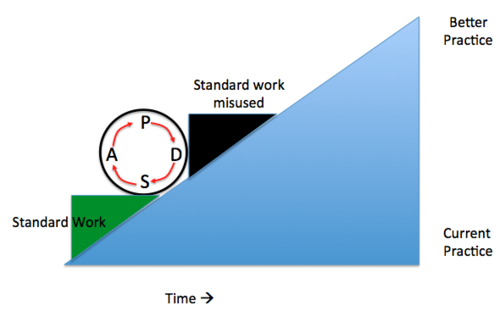The Curious Cat management blog carnival began in 2006 and it is published twice a month. I also publish a collection management improvement articles on the Curious Cat Management Articles site.
Posts #184 and #185 were summaries of the progress of the 5th annual Curious Cat Management Carnival roundup.
- We agree… but only because we don’t understand each other by Jason Yip – “By making our understanding explicit, we can highlight our disagreements and come to a resolution and real agreement.”
- This is a little story about how I learned the right way to manage people (on my first job, age 14) by Woody Zuill – “Lesson Two: Continuous Improvement. Mr. Smith: ‘However, another part of the job is for you to think about what you are doing, and look for better ways to do things. Keep track of your hours, and next Saturday when I pay you for the week I want you to tell me one way to do things better. Look for problems, and think about how we could deal with them.'”
- Here’s what I learned hanging out with Jason Fried by Dan Shipper – “When a lot of people think of marketing or sales they think of tricks that fool people into buying something. But great marketing doesn’t do that. Great marketing comes from understanding exactly what the customer needs on an emotional level, and showing how your product will satisfy those needs.”
- User Gemba by John Hunter – “It isn’t enough to know how you intend that customers will use your products or services; you have to get out to the gemba of actual customer use and learn what problems your customers use your products to solve.”

Dragonfly, at the Banteay Srei temple in Cambodia, by John Hunter






The Market Discounts Proven Company Leadership Far Too Quickly
Developing a strong executive leadership culture is not a short term effort. It isn’t based on one person. It almost never deteriorates quickly. Yet markets continually overact to minor blips on the long term success of companies. I think this is mainly due to a failure to appreciate systems and a failure to appreciate variation along with plenty of other contributing factors.
The market’s weakness does provide investment opportunities. Though taking advantages of them is much more difficult than spotting a general weakness. While excellent management almost never becomes pitiful overnight (regardless of how often talking heads would have you believe) business can change very quickly due to rapidly changing market conditions. Avoiding the purchases when the underlying business has sustained a significant blow that excellent management will deal with but which will reduce the value of the enterprise going forward is key to taking advantage of the market’s silly overreaction to bad news (or even calling things “bad news” that are not actually bad just not as awesome as some were hoping for).
My positive opinion of Toyota’s management has continued for a long time. A few years ago an amazing number of people were all excited about the “decline of Toyota” and wrote about how Toyota’s ways had to change. I wrote at the time was this is needless hysteria and if Toyota just focused a bit more on applying the Toyota’s management methods they would be in great shape. The problems were due to Toyota’s mistakes in practicing the Toyota Production System not in a weakness of those practices.
Looking at a chart of Toyota’s stock price from 2007 to today it peaks at about $137 in January 2007 and bottoms at $58 in early 2009 and now is at $96. Toyota’s stock price has been priced richly due to respect for management and consistently strong cash flow. As it fell below $75 there you no longer had to pay a premium for excellent management, but that management was still there. I like getting bargains when I buy stocks. One of the things I have learned I am too focused on bargains and I should be more willing to accept less of a bargain to get great management systems – so I have adjusted, and have improved my results. When I can get a great bargain and great management it is wonderful, though sadly a rare occurrence. Toyota’s price now seems reasonable, but not a huge bargain.
The market continually gets overly excited by either actual problems or perceived problems. I wrote about this happening with Netflix 2 years ago. Netflix made some mistakes and faced some tough business issues. The evidence of sound, sensible, effective management vastly outweighed the evidence for management failure – yet there were hundreds of articles about the pitiful failure of Netflix management.
Continue reading →